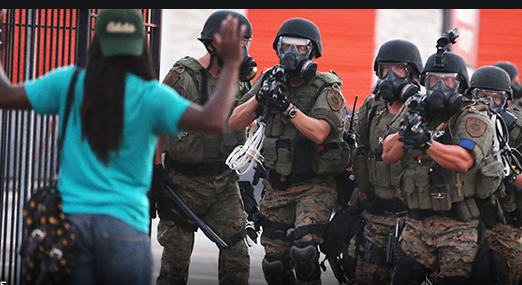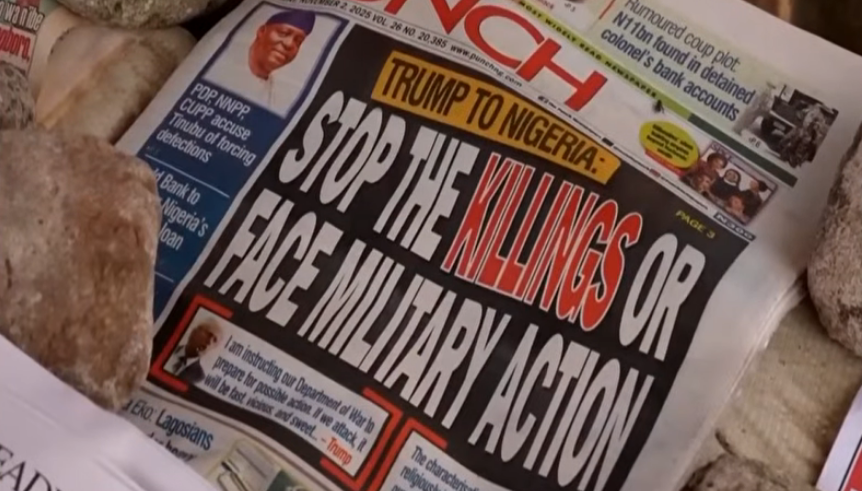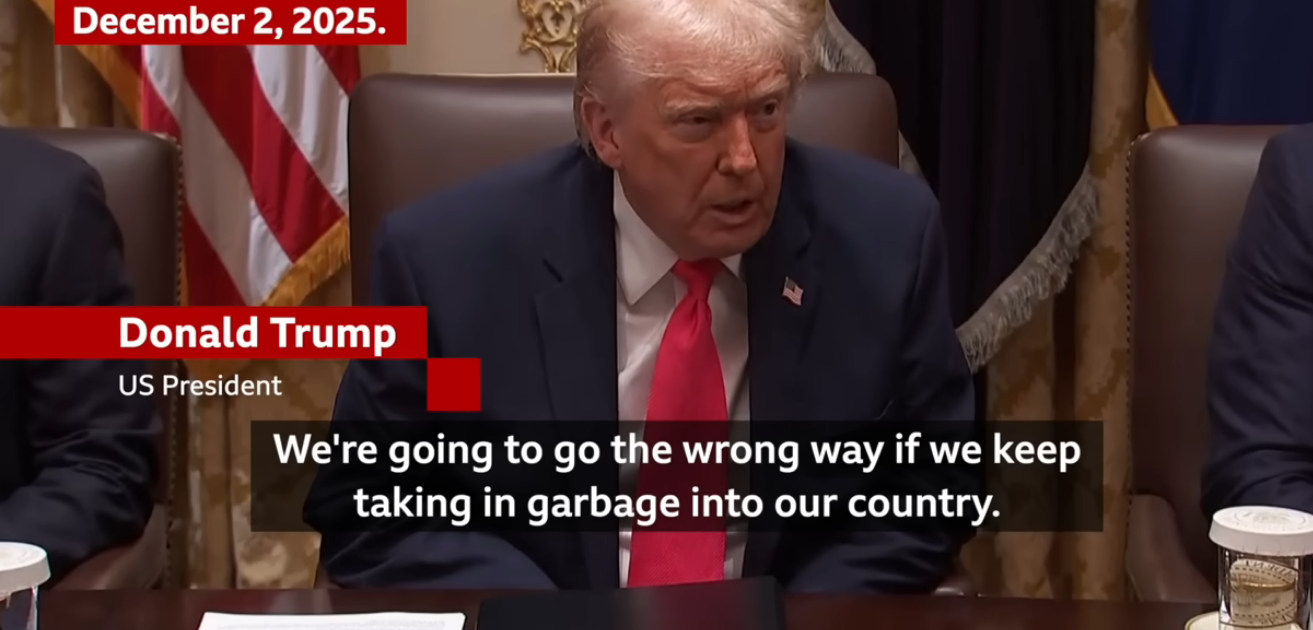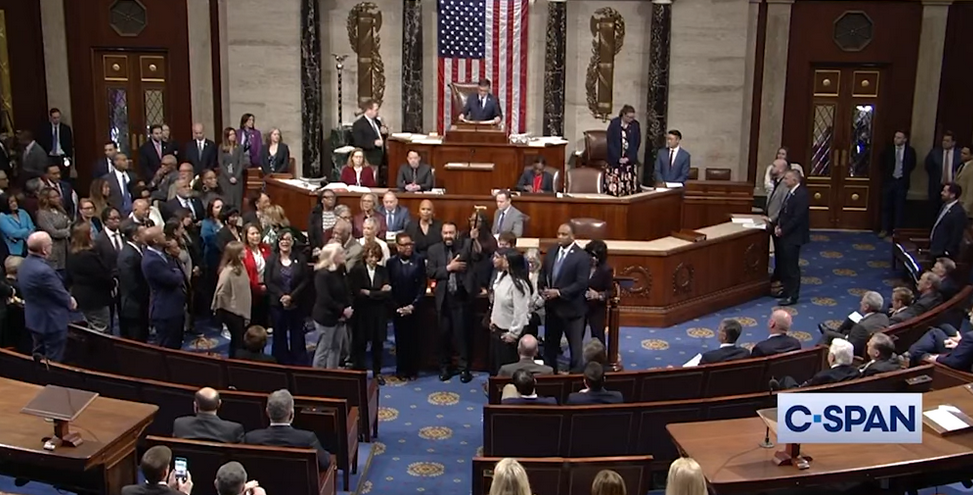[Police Militarization]
The weapons that come to local police departments through the 1033 pipeline are direct from the military and, by extension, the War on Terror.
Photo: YouTube
The following essay excerpt is from “Weapons of War On Our Streets: A Guide to the Militarization of America’s Police” written by San Jacobs.
The claim often heard from those attempting to pass more gun control legislation is that all they’re trying to do is get the “weapons of war off our streets,” but it’s simply untrue that “weapons of war” are available to the general public. You’d last about three minutes in a conventional war with an AR-15, even with one of the most aggressive builds you can get your hands on (that doesn’t mean it’s impossible for guerilla uprisings to defeat powerful enemies).
The truth is that the only people with “weapons of war” on America’s streets are, increasingly, the police.
Thanks primarily to the Pentagon’s 1033 program which allows law enforcement agencies to get their hands on Department of Defense technology and the Bush-era War on Terror, American police have received a startling amount of heavy-duty, military-grade hardware. Between 1998 and 2014, the dollar value of military hardware sent to police departments skyrocketed from $9.4 million to $796.8 million.
And just as when “all you’ve got is a hammer, then everything looks like a nail”, militarized police have become more willing to use their new weapons when carrying out law enforcement tasks. For example, the number of SWAT raids in the United States grew dramatically from about 3,000 in 1980, to a whopping 50,000 SWAT raids in 2014, according to The New Jim Crow by Michelle Alexander.
To say that the militarization of the police is nothing new is to ignore America’s recent history as well as the long-standing model of a peace officer. As the police have militarized and the Pentagon backs major players in Hollywood, the focus has shifted from one who keeps the peace to one who enforces the law – and that’s an important difference.
What Is the Difference Between a Law Enforcement Officer and a Peace Officer?
The model for police, and the constables and sheriffs before them prior to the late 20th Century, was that of a peace officer. In many states, it’s not even true that police are law enforcement officers – even though it’s a term frequently used by the police and their fans in the “Blue Lives Matter,” “Thin Blue Line,” and “Back the Blue” movements.
It’s a subtle, but important, distinction: Is the role of the police to enforce the law or to keep the peace?
Consider the difference between the police force of a typical American city and the fictional Andy Taylor of The Andy Griffith Show. The former is concerned primarily with enforcing the law for its own sake and catching as many “lawbreakers” as possible. The latter, on the other hand, is primarily concerned with keeping the peace. Sometimes that means looking the other way when laws get broken.
This isn’t simply a matter of how pleasant or unpleasant it is to deal with the police. Law enforcement officers might be writing parking tickets in the middle of a burglary epidemic due to their need to enforce all the laws all the time. Conversely, a peace officer is going to ignore a lot of low-level, habitual crime – even when there are clear victims (for example, vandalism or loitering) – because he emphasizes going out and catching violent and dangerous criminals. There’s no impulse to arrest a guy who habitually smokes weed on a street corner if he’s providing the police with valuable information leading to the arrest of violent criminals.
Peace officers might have the need for a sidearm and a shotgun, but they have little or no need for, say, a tank, to say nothing of the variety of nasty DARPA weapons police departments are increasingly wanting and getting.
The Origins of Militarized Police Weapons of War On Our Streets: A Guide to the Militarization of Police
Before we begin talking about the militarized American police, it’s worth mentioning that United States law specifically prohibits the military from enforcing the laws in the U.S. That’s why we don’t have the Army enforcing the law, and also why we don’t have a military-style gendarmerie as is common in Europe. This law, the Posse Comitatus Act of 1878, was passed after the removal of federal troops from the Southern states following the end of Reconstruction. With rare exception, the federal government is not allowed to use the Army or the Air Force to enforce the law and the Navy has strict regulations for both the Navy and Marine Corps regarding the use of either for domestic law enforcement.
However, this law has been somewhat undermined due to police forces becoming so much like the military, which began during Prohibition in the 1920s. Organized crime got its first foothold in American life thanks to the lucrative black market in liquor. This was also the golden age of bank robbery with figures like Bonnie and Clyde, Pretty Boy Floyd and John Dillinger becoming folk heroes. The Thompson submachine gun and the Browning Automatic Rifle were increasingly used by organized crime and the “stars” of bank robbery.
The Prohibition Era saw domestic police departments wielding automatic weapons for the first time. There was nothing nefarious about this from the perspective of local police departments. In fact, it was the police departments most regularly in contact with vicious organized crime, such as Chicago and Kansas City, who led the way in arming their officers with automatic weapons and armored vehicles. At least two rounds of ammunition, the .38 Super and the .357 Magnum, were developed with the express purpose of being able to penetrate the early bulletproof vests worn by gangsters in the Prohibition Era.
Overall crime increased by 24 percent during the first two years of Prohibition. This included a nine-percent increase in theft and burglary, a 13-percent increase in homicides, and a 13-percent increase in assault and battery. Overall, police department costs increased by 11.4 percent. However, because the police were busy fighting the scourge of demon alcohol, it was difficult for them to target crimes unrelated to this. In fact, a study of South Carolina counties that enforced Prohibition versus those who didn’t found a whopping 30- to 60-percent increase in homicides in the counties who enforced the law. All of this is according to Charles Hanson Towne in The Rise and Fall of Prohibition: The Human Side of What the Eighteenth Amendment Has Done to the United States.
This era of militarization drew to a close with the end of Prohibition itself. However, the militarization of police would resume again a few decades down the line.
The Second Wave of Militarized Police
The second wave of police militarization begins with the race riots in the 1950s and 1960s, with the Watts Riots in 1965 gaining a sort of gravitas. The LAPD used military-style weapons and tactics to end the riots. What’s more, an increasingly militant civil rights movement was seen by the CIA as an arm of international Communism. While there is some merit to this view, it’s certainly true that it led to a philosophy of increasingly militarized police.
The militarization of police is not by any means based on manufactured and artificial paranoia. Even in the case of Prohibition, it’s a simple fact that organized crime used weapons with firepower far in excess of what the police had access to. Similarly, the second wave of militarized police was partly in response to an increasingly militarized organized crime thanks in part to the beginnings of the War on Drugs.
On one hand, the police were encountering more and more dangerous organized crime syndicates, such as the Medellin Cartel and street gangs like the Gangster Disciples. Urban unrest included not just race riots like the aforementioned Watts Riots and the 1967 riots in Detroit, but also the riot outside of the 1968 Democratic Party Convention. Domestic terrorist organizations like the Weather Underground, the Symbionese Liberation Army, and the Earth Liberation Front likewise offered increased challenges to law enforcement.
Unrelated to the War on Drugs, the 1986 FBI Miami shootout was a game-changer for law enforcement budgets. Police outnumbered suspects by a factor of four. Despite this, they were pinned down by suppressive gunfire. The incident lasted five minutes and 145 rounds were fired. The suspects were hit multiple times, but continued to fight in part because the officers’ and agents’ service revolvers did not have sufficient stopping power. In response, there was a movement to increase the firepower of service revolvers. This is when semi-automatic pistols began to replace the revolver and larger magazines became the rule. Rifles, shotguns, and heavier body armor also saw increased adoption after this shootout.
Another incident accelerating the militarization of police is the North Hollywood shootout of 1997. This bank robbery left two dead (the perps) and 20 wounded – 12 police officers and eight civilians. It lasted 44 minutes, an eternity in terms of police shootouts, with approximately 2,000 rounds fired. The perps got off approximately twice as many rounds as the police officers on the scene, but the game-changer was the arrival of the SWAT team, who had much more appropriate weaponry. This led to everyday police officers getting equipment that was customary for SWAT teams in the 1990s.
The 1033 Program
The 1033 Program was enacted in the wake of the 1997 North Hollywood shootout. Created by the National Defense Authorization Act for Fiscal Year 1997, it allowed law enforcement agencies to get their hands on military hardware. Unsurprisingly, the preference was given to law enforcement engaged in anti-drug and counter-terror activity, underscoring the vital role of wars on abstract concepts in increasing the militarization of the police force. Bill Clinton – he of the massacres at Waco and Ruby Ridge – signed the bill into law.
$5.1 billion in material was transferred from the Department of Defense to local law enforcement between 1997 and 2014, with ammunition being the most common requisition. 8,000 law enforcement offices participate as of 2014.
Also included in this total are 20 different school law enforcement agencies. The Los Angeles School Police Department has requisitioned 61 assault rifles and three grenade launchers. Ten school police departments in the State of Texas and have requisitioned 25 automatic pistols, 64 M16s, 18 M14s, and tactical vests.
The program has come under bipartisan criticism lead by Rand Paul. Senator Paul stated that the program has “incentivized the militarization of local police precincts and helped municipal governments build what are essentially small armies.” Senator Claire McCaskill led the first investigation of the program starting in September 2014. At least one study found a correlation between the 1033 program and increased fatalities at the hands of law enforcement.
21st-Century Police Militarization
One of the big game-changers for militarization of police was the 9/11 attacks. This greatly eroded the Fourth Amendment protections against unlawful search and seizure. Now police – local, state and federal – need to suspect “terrorism.” This provides the same convenient cover for police overreach that was previously offered by the War on Drugs.
President Obama gave new directives for the 1033 program that forbade police from acquiring certain weapons from the military. These include weaponized vehicles, grenade launchers and bayonets. Attorney General Jeff Sessions ended these restrictions upon assuming office in 2017.
The propaganda war for militarization often comes under the rubric of a “war on police.”
However, there is no factual basis for the idea that police officers are under some kind of unprecedented siege. The year 2015 had one of the lowest levels of police murders on record. Not only were fewer police officers being killed on the job, far fewer people were attempting to hurt police officers.
The weapons that come to local police departments through the 1033 pipeline are direct from the military and, by extension, the War on Terror.
For the rest of this Ammo.com story log on to: https://ammo.com/articles/police-militarization-weapons-of-war-darpa-surveillance






